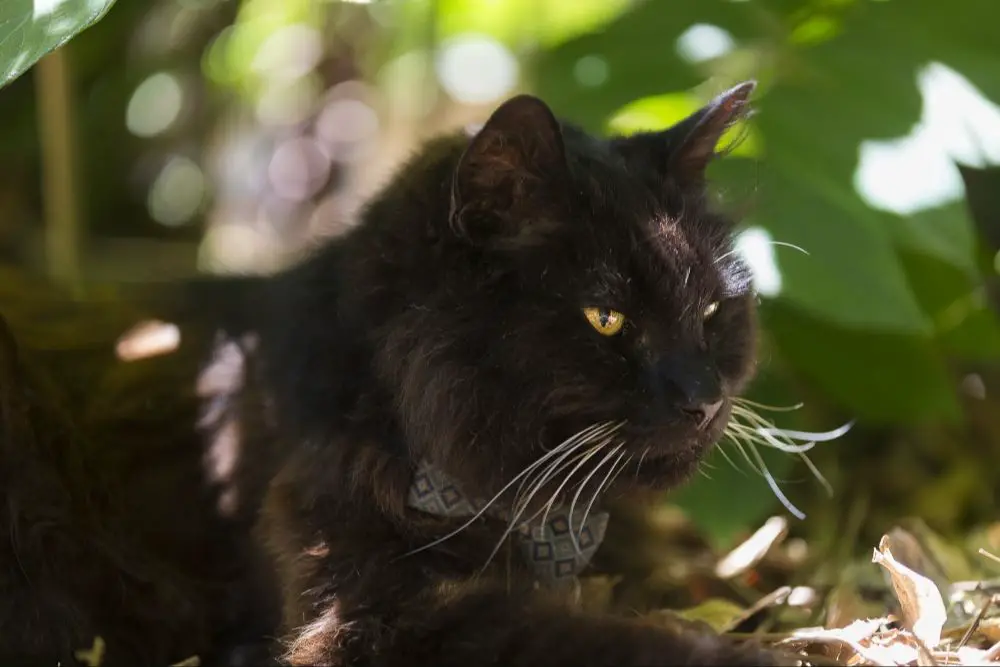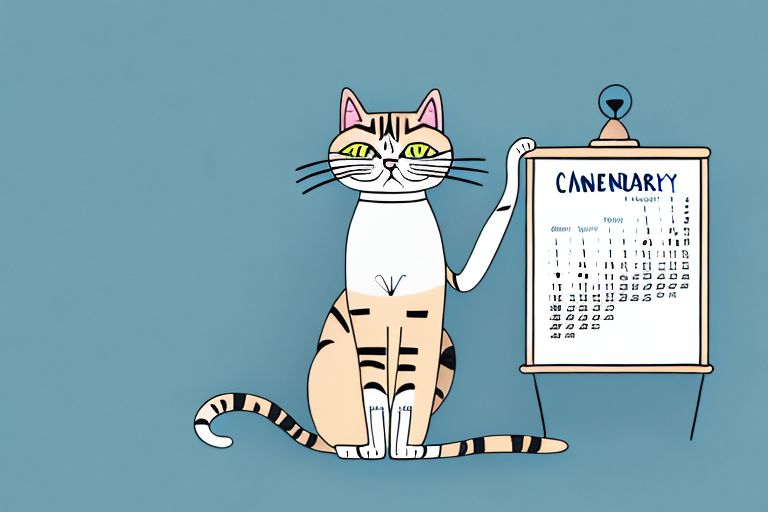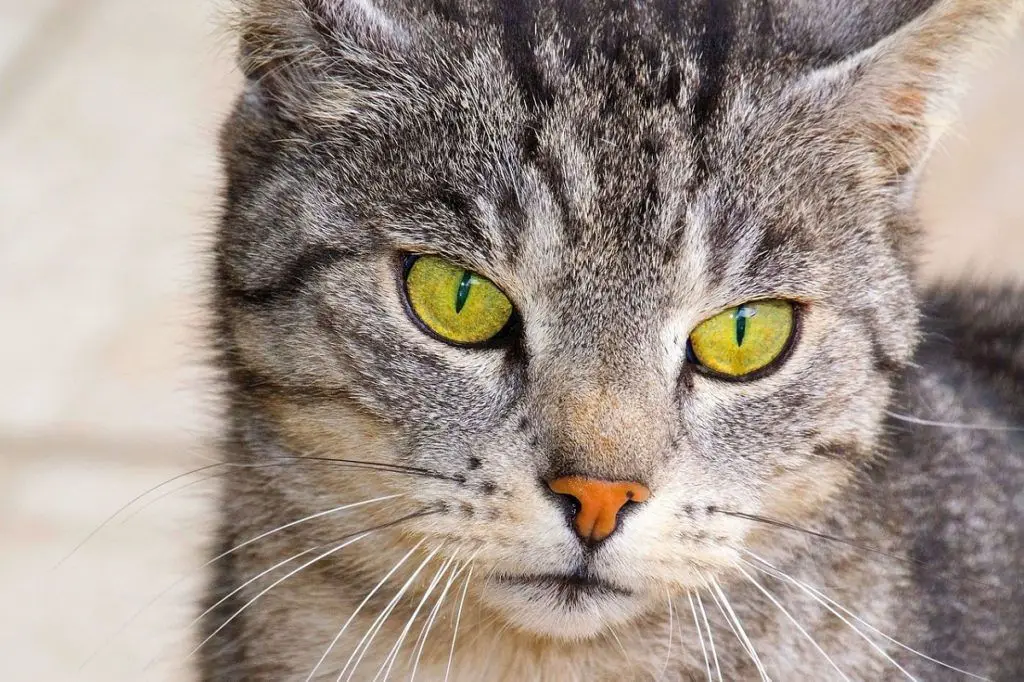
The idea that cats age 7 years for every human year is a popular myth about how to calculate a cat’s age relative to a human’s. This myth suggests that cats age faster than humans, so 1 year for a cat is equivalent to 7 human years. Many cat owners are familiar with the phrase “cat years” and this 7 year multiplier when thinking about their cat’s actual age. However, the 7 cat years per 1 human year rule of thumb is an oversimplification. While cats do mature faster than humans in the first 2 years of life, they actually age more slowly in adulthood. The 7 years myth persists, but a more accurate formula is needed to convert cat years to human years.
Origins of the Myth
The popular myth that cats age 7 years for every calendar year can be traced back centuries. One of the earliest known references comes from a 13th century Arabic manuscript which stated that cats live 48 years, while humans live 660 years. This equates to a 1:7 ratio between cat and human years.
In the late 1600s, English philosopher John Locke made a passing reference to the 7 cat years per 1 human year ratio in one of his published works. The idea continued to spread in the 1700s and 1800s as more people wrote about the supposed phenomenon.
By the early 1900s, the myth was firmly cemented in popular culture, with the 7:1 ratio being commonly referenced in books, magazines, newspapers, and everyday conversations when discussing the lifespan of cats.
Why 7 Years?
The number 7 has often had mystical and spiritual significance in many cultures. It is considered a lucky number and is featured prominently in myths, legends, and religious texts. This gives a possible explanation for why the number 7 became associated with calculating cat years.
In the Bible, the number 7 appears frequently and symbolizes completeness or perfection. God rested on the 7th day after creating the world in 6 days. There are 7 seals in Revelations and 7 trumpets sounded when the seals are opened. Ancient Judaism has 7 archangels. In Buddhism there are 7 treasures belonging to the universal monarch and 7 factors of enlightenment.
Beyond religion, 7 is prevalent in folklore and fairy tales. There are 7 dwarfs in Snow White, 7 league boots allow the wearer to walk 7 leagues in a single step, and the 7th son of a 7th son is believed to have magical powers. The number 7 has been ingrained in storytelling and myth.
The ubiquity of the number 7 across cultures and its mystical associations may have contributed to the idea that cats age 7 times faster than humans. The number 7 simply has an air of magic, destiny, and deeper meaning that makes it a fitting multiplier for calculating cat years.
How Cats Age

Cats go through several distinct life stages as they age. A cat’s lifespan and rate of aging depend on several factors like breed, environment, nutrition, and veterinary care. On average, indoor cats live 12-18 years while outdoor cats live shorter lifespans around 8-10 years.
The main life stages for cats are:
- Kitten – Birth to 6 months
- Junior – 6 months to 2 years
- Prime – 3 to 6 years
- Mature – 7 to 10 years
- Senior – 11 to 14 years
- Geriatric – 15+ years
Kittens experience rapid growth and development. By 6 months old, they reach adulthood. The junior stage from 6 months to 2 years is when cats reach sexual maturity. In the prime stage from 3-6 years, cats are in optimal health. After 7 years old, cats enter the mature stage where they start to slow down. Senior cats from 11-14 years begin to experience age-related health issues. Cats 15 years and older are considered geriatric with higher needs for medical care and supervision.
While breeds and individuals vary, most domestic cats have a life expectancy of 12-18 years with proper care. Indoor cats generally live longer while outdoor cats face more environmental risks and dangers that lower their lifespan. With high quality nutrition, regular vet visits, exercise, enrichment, and attentive caregiving, many cats can live happily into their late teens or early 20s.
Problems with the Myth
The idea that cats age 7 years for every calendar year is an oversimplification that can lead to misconceptions. While cats do mature faster than humans early in life, the 7:1 ratio is inaccurate and does not reflect the complex way cats age.
According to veterinarians, cats reach the human equivalent of 15 years old by age 2. The 7 year myth implies a 21 year old cat would be equivalent to a 147 year old human, which is unrealistic. Cats’ aging slows dramatically after the first 2 years. A 15 year old cat is comparable to around 76 human years. The 7:1 ratio exaggerates the speed at which cats age during adulthood.
Additionally, aging is dependent on many factors like breed, environment, and care. A simple formula like 7 cat years per human year cannot encapsulate the nuances. Genetics play a major role in lifespan variability among cats. The myth presents a rigid oversimplification.
While the intent behind the myth is innocent, it has created misconceptions about cat aging. Using inaccurate formulas can lead to improper care and expectations. To better understand a cat’s needs at different life stages, consult veterinarians rather than folklore wisdom.

A More Accurate Calculation
While the “one year equals seven cat years” idea is popular, veterinarians agree that cats actually age faster than that in the first two years of life. The “seven year” rule is too simplistic to accurately calculate feline ages.
A more accurate formula takes into account that cats mature quickly in the first two years, then their aging slows. According to Purina, the following is a better way to calculate cat years:
- Year 1: 15 human years
- Year 2: 9 human years
- Year 3+: Add 4 human years for each cat year
So at age 1, a cat is developmentally about the same as a 15-year-old human. At age 2, they are like a 24-year-old person. After that, each additional year is roughly 4 “cat years.”
There are also formulas that take into account breed size and weight. Larger cats tend to have shorter overall life spans than smaller breeds. An online calculator can estimate age based on these factors.
Impact on Care
The myth that cats age 7 times faster than humans can impact how people care for senior cats. When owners believe their 10-year-old cat is the equivalent of a 70-year-old person, they may mistakenly think that their cat is nearing the end of its life. In reality, indoor cats today have an average lifespan of 15-20 years[1]. This means a 10-year-old cat is typically middle-aged, not elderly.
Because the myth makes cats seem old prematurely, owners may miss out on many healthy years with their feline companions. They may also fail to provide proper preventative healthcare if they assume geriatric issues are inevitable or untreatable. In fact, with regular vet visits, a nutritious diet, exercise, and enrichment, senior cats can live happily and healthily into their late teens or even early 20s[2].

Dispelling the myth that cats age faster than humans allows owners to better understand their cat’s health and needs. With accurate information, pet parents can make informed choices to nurture their cat’s wellbeing and extend its natural lifespan through diligent care.
Why the 7 Cat Years Myth Persists
Despite being inaccurate, the myth that one human year equals seven cat years persists for several reasons. Many people first hear this myth as children and it gets repeated as fact throughout life. The idea provides a simple rule of thumb when comparing cat and human ages, so it continues circulating. Additionally, cats do mature faster than humans early in life, reaching adulthood around age 2 compared to humans’ age 18. So there is a grain of truth related to cats’ accelerated development. However, the seven year ratio greatly overestimates feline aging after the first two years. While convenient and rooted in partial accuracy, the 7:1 myth misrepresents how cats truly age over their lifespan.
According to veterinarian Dr. Trina Hazzah writing in Popular Science, “There’s no basis for the seven-year rule. Cats age far faster than that in the first couple of years of their lives. A 1-year-old cat is physiologically similar to a 16-year-old human. And a 2-year-old cat is like a person of 21.”
Dispelling the Myth
Despite the popularity of the myth that 1 human year equals 7 cat years, it’s important for cat owners to have an accurate understanding of feline aging. As veterinarian Dr. Jessica Vogelsang explains in an article for PopSci, “While it’s true cats mature faster than humans do in the first two years of life, cats and humans age at the same pace thereafter.” https://www.popsci.com/dog-cat-years-explained/
According to Purina, there’s no simple formula for converting cat years to human years since cats age differently depending on breed, environment, and care. However, Purina provides a more accurate estimate: the first 2 years of a cat’s life are equal to about 25 human years. After that, each additional cat year is approximately 4 human years. https://www.purina.co.uk/articles/cats/senior/care/cats-age-in-human-years
Having the right understanding of how cats age allows owners to provide better lifelong care. For example, senior cat care recommendations start around age 7 (for a short-lived breed) to 10 (for a long-lived breed) rather than the mythic 49 to 70. Accurately gauging a cat’s age ensures appropriate nutrition, activity levels, health monitoring, and more as cats go through different life stages.
Conclusion
At the end of the day, the myth that cats age 7 years for every 1 human year stems from general misunderstanding about normal feline aging. While kittens mature quickly, but cats soon reach adulthood and slow their aging down considerably compared to us humans. Aging is a complex biological process and varies by breed, environment, and individual health. While the 7-year myth persists, it can lead owners astray about changes to expect over a cat’s lifespan. Instead, focus on providing quality care and nutrition suited for your cat’s actual age and condition. Monitor health closely, especially in senior cats, to catch issues early and maximize longevity. Though cats don’t live as long as we’d like, proper perception of aging allows us to better appreciate the time we have with our feline companions.
